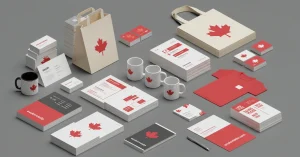
Get 20% Off On Your First Order | User Code: FIRSTORDER
Signs and banners are like your store’s voice. They tell people who you are and what you sell — without needing to say a word. Good signage makes it easy for people walking or driving by to notice your shop, understand what you offer, and feel invited to come inside.
Even if your business is great on the inside, people won’t come in if the outside doesn’t grab their attention. That’s why signs, banners, and window graphics are so important — they help bring the outside and inside together.
People decide in just a few seconds whether they’ll stop or keep walking. If your signage looks neat, clear, and interesting, people will feel more confident about stepping in. But if your windows are blank or your signs are faded or confusing, they may ignore your shop completely.
First impressions are powerful. A clean window display or a bold banner can create curiosity and trust even before someone walks through the door.
That means signs don’t just “help” — they directly affect sales and foot traffic.

Great signs use simple, bold designs. This means:
White space also matters. Too much text or too many graphics can make a sign hard to read.
Your sign should be readable from across the street. Use:
Ask yourself: If someone’s driving by at 30 km/h, can they read it?
Bigger is usually better — as long as it fits your space. Vertical banners, sandwich boards, hanging signs, and wall-mounted panels can all work, depending on your location.
Unique shapes — like circles or angled banners — can catch the eye, but don’t go for style over clarity.
Your sign should speak clearly, not shout or whisper.

Window decals are stickers made of vinyl that stick to glass. You can use them to:
Vinyl graphics are cost-effective and easy to change every few months.
Use large, bold text like “SALE TODAY” or “50% OFF SHOES” in the center of the window. Add a start and end date to create urgency. Use color (like red or orange) to make promotions pop.
Changing the window design often keeps things fresh and gives people a reason to look again.
Empty windows don’t say anything. But window graphics let you talk to people outside. Whether it’s a quote, a sale, or a picture of a product, you’re using that blank glass to attract attention.
Think of windows as a billboard — one you already own.
The more touchpoints you create, the more people you reach.
Signs work best when people naturally look in that direction — eye level is ideal. Signs placed too high or too low might be missed.
Also think about lighting, glare, and obstacles. Make sure nothing blocks your sign.
These little tricks help you guide attention without people realizing it.
If your business is fun, your signs should feel fun. If it’s high-end, your signs should feel sleek. When your signs match your brand, people know what to expect. That builds trust.
Pick 2 fonts and 2-3 brand colors. Use them across everything — signs, flyers, website, packaging. It makes your business look polished and professional.
Your logo should be visible but not overpowering. Place it in a corner or top edge.
Use a call-to-action like:
These CTAs tell people what to do next.
Make sure all your signs — window graphics, banners, and boards — look like they belong together. They should all use the same colors, style, and tone. A strong brand presence pulls people in and makes them remember you.
Choose materials based on weather, sunlight, and how long you plan to use the sign.
Cheap signs fade fast. But not every sign needs to last forever. Use low-cost options for short promotions. Spend more on your main storefront sign — it’s your 24/7 advertisement.
Use A/B testing: Try two designs on different weeks. Track sales or foot traffic. The design that brings in more people wins.
You can also offer different promo codes per sign to see which performs better.
Yes. You can:
This connects your offline and online marketing.
QR codes let customers scan and:
They’re fast and save space on your sign.
A well-lit sign is easier to see, especially at night. Use spotlights, backlighting, or light-up letters to make your store visible after dark.
Raised letters, wood textures, or even chalkboard signs feel more “real” than flat posters. They grab attention and make your store look unique.
Stores that went from cluttered signs and dark windows to bright, clean, clear graphics noticed more people stopping, looking, and entering. Sometimes, just a change in color, layout, or font makes a big difference.
Your sign is often the first and only chance to get noticed. A well-designed sign makes people stop, look, and walk in. Review your current signs. Fix what’s faded or messy. Add one new, clear sign with a strong message. Small changes lead to big results.
Set aside 5–10% of your marketing budget. It’s one of the best long-term investments for visibility.
Yes. Signs bring in people. People bring in sales. It’s that simple.
Yes. Most window vinyl can be removed and replaced without damage. Great for seasonal changes.
Both work. Digital signs let you change messages often. Printed signs are cheaper and easier to use for short-term promos.
A good sign can pay for itself in a few months. It keeps working for you every day.
DIY is okay for small signs. For your main sign, hire a designer. It’s worth it for the quality and brand image.
At least once a year. But update window displays monthly or with every new offer.
Check with your city or building. There may be limits on size, lighting, or placement.
Yes. You might need a permit. Make sure your sign doesn’t block sidewalks or view of traffic.
Update your graphics, clean your signs, and change offers every few weeks. Keep things new so people keep looking.